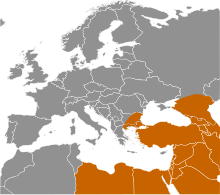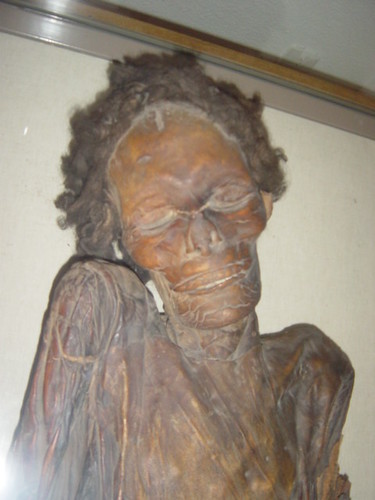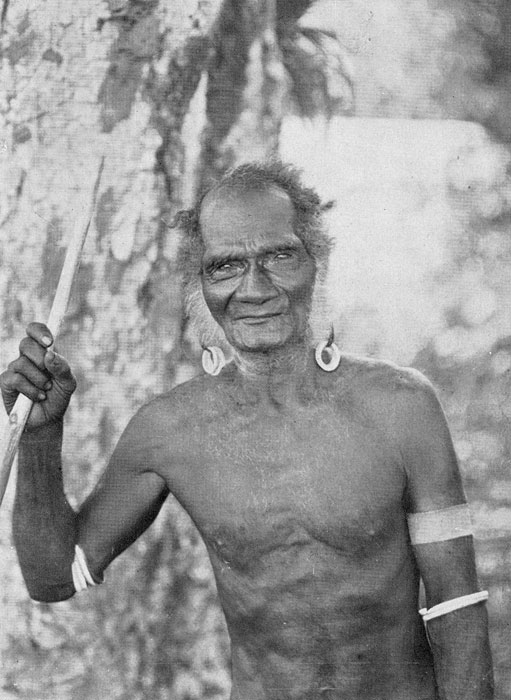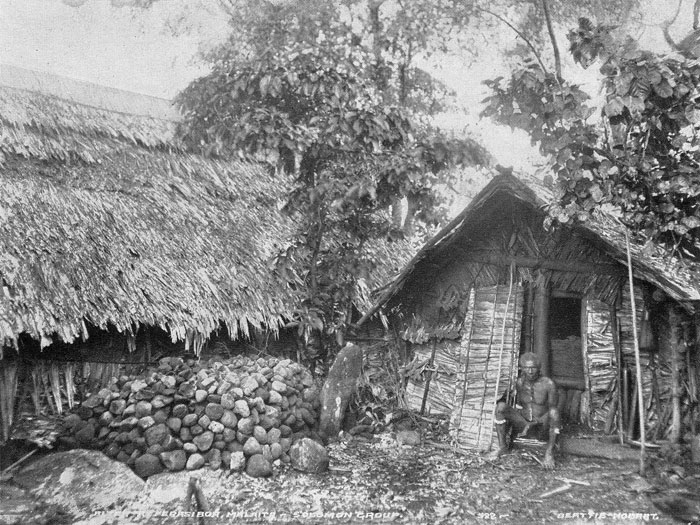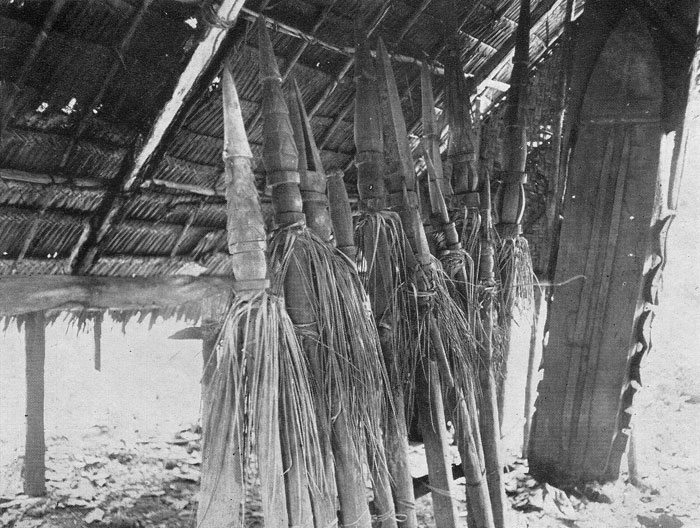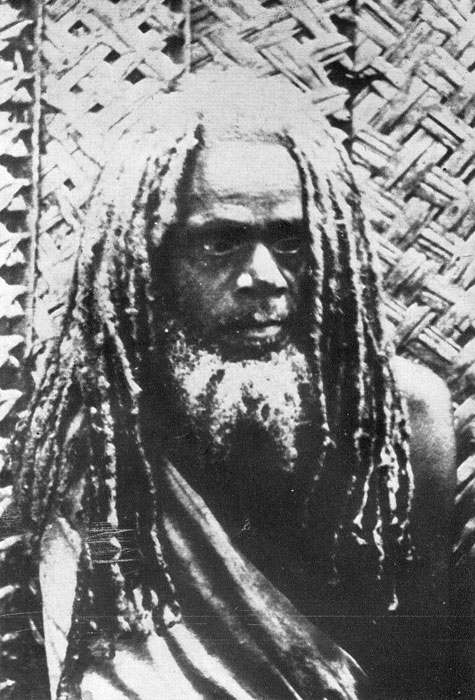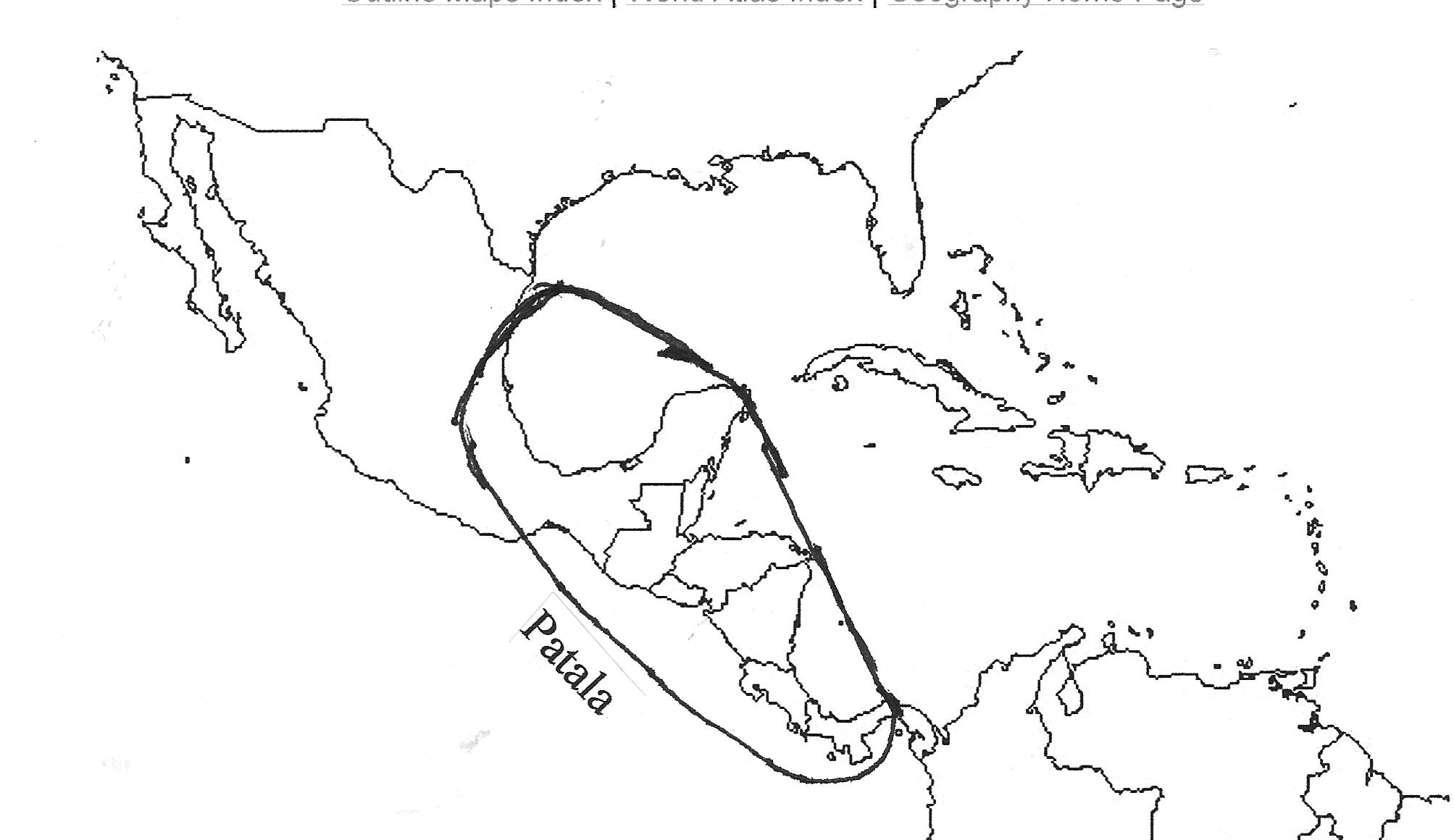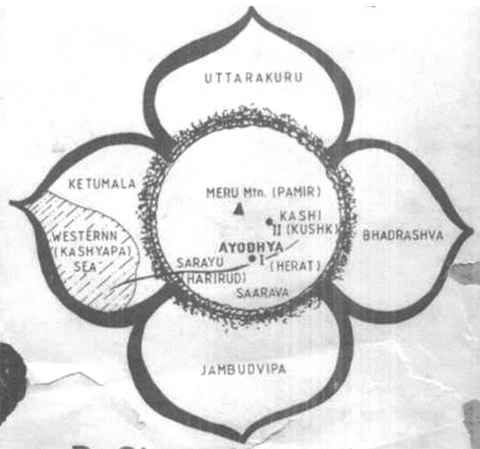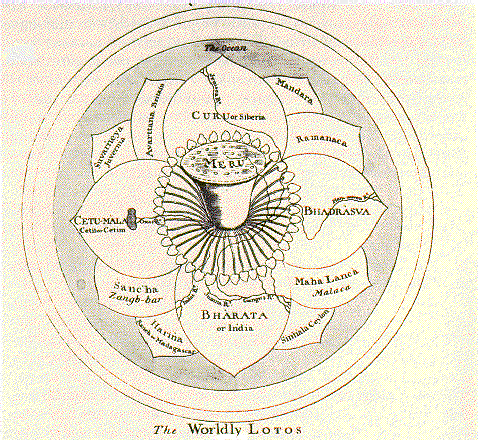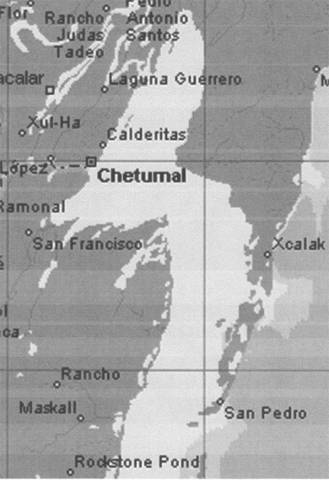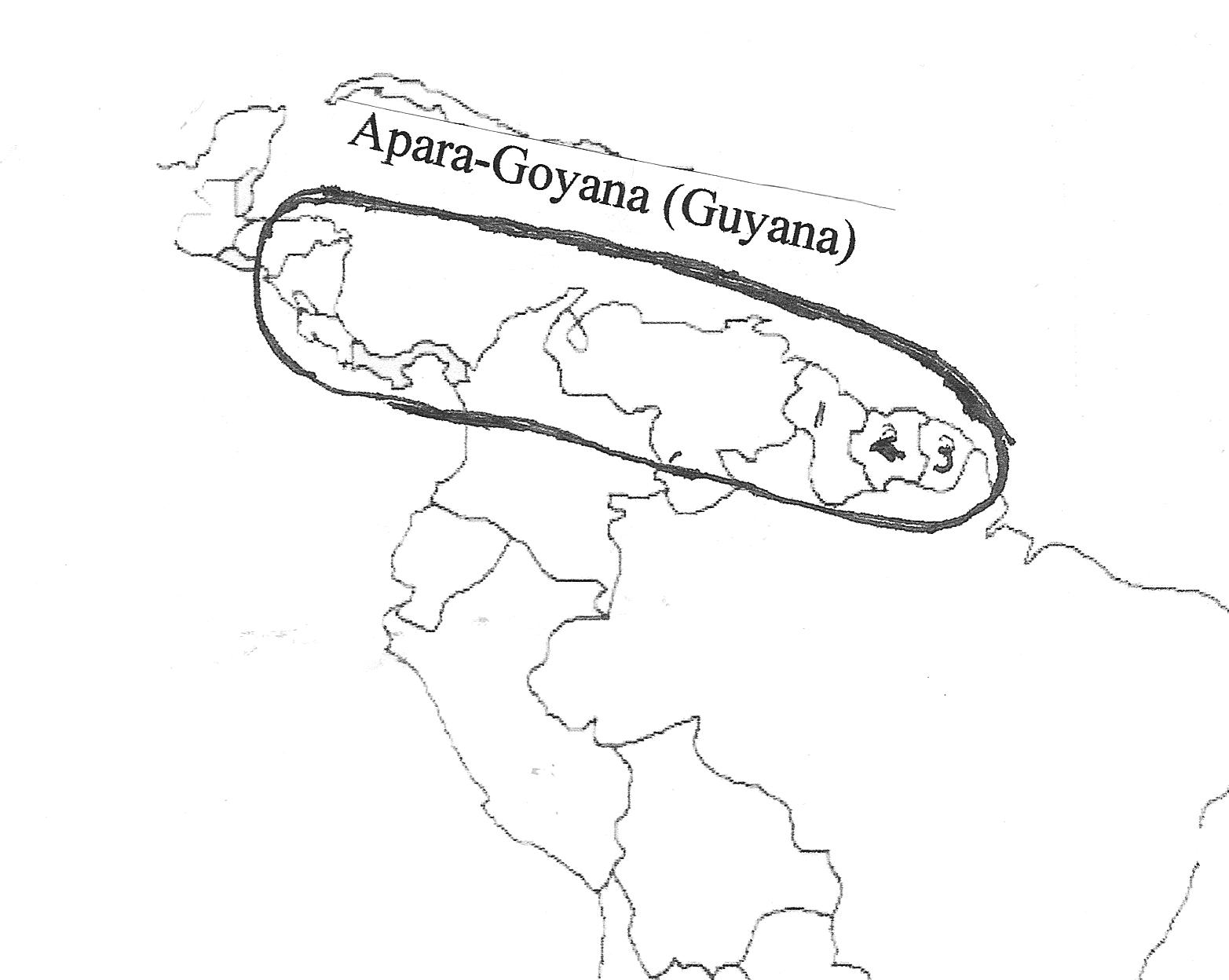Original Article
By George Weber
Toba Volcano 6. Acknowledgments
Sincere thanks to all the authors listed in the References and to all those that have worked, are working and will work in the field - as long as they publish their results.
Many thanks to all the scientists and their publishers (among which my compulsory
weekly reading
Nature figures foremost) whose drawings, charts, photographs, data, arguments and ideas I have used and sometimes adapted to the requirements of the Internet where this article is published exclusively. Wherever possible, the source for materials used is given so that the scientific labourers and their publishers do not feel left out or cheated.
I hope that many readers will follow up and go back to the sources that have fed this article. There is plenty more there to draw from.
A special thanks to Tim Gillin of Australia for his original thinking and his ideas. It was Tim who about 2 years ago in all innocence started me off on what I have come to think of as "the Toba trip". I have often cursed him for it, but now that it is done, I feel mostly grateful.
My gratitude also goes to the ladies of the Kantonsbibliothek Baselland at Liestal, Switzerland, for invariably filling even the most outlandish request for article reprints. It can't have been easy.
And last but not least, a great big kiss to my wife Eloi in gratitude for all she has had to put up with while my head has been on Toba She has had to put up with quite a lot, I can tell you!
Needless to say, I alone remain responsible for what I have written here. Blame me for it, but be kind and merciful even in your wrath.
George WeberTHE ANDAMAN ASSOCIATION
[ Go to HOME ]
[ Go toHEAD OF THIS CHAPTER ] Last changed 1 February 2006
Original Article
Toba Volcano 7. References
Acharyya S.K., and Basu P.K. 1992. "Toba ash on the Indian subcontinent and its implications for correlation of late pleistocene alluvium."
Quaternary Research 40:10-19
Allen J.R.M., Brandt U., Brauer A. Hubberten H.-W., Huntley B., Keller J., Kraml M., Mingram J., Negendank J.F.W., Nowaczyk N.R., Oberhänsli H., Watts W.A., Wulf S., and Zolitschka B. 1999. "Evidence of rapid last glacial environmental fluctuations from southern Europe."
Nature 400:740-743
Ambrose S.H. 1997. "Implications of geomagnetic field variation for the chronology of the Middle to Later Stone Age and Middle to Upper Palaeolithic transitions."
Journal of Human Evolution 32(4), A2
Ambrose S.H. 1998. "Late Pleistocene human population bottlenecks, volcanic winter, and differentiation of modern humans."
Journal of Human Evolution 34:623-651
Ambrose S.H. 2003. "Did the super-eruption of Toba cause a human population bottleneck? Reply to Gathorne-Hardy and Harcourt-Smith."
Journal of Human Evolution 45:231-237
An Z.S., Liu T.S., Lu Y.C., Porter S.C., Kukla G., Wu X.H., and Hua Y.M. "The long-term palaeomonsoon variation recordedd by the loess-palaeosol sequence in Central China."
Quaternary International 7/8:91-95
Anderson K.K. 2004,
see North Greenland Ice Core Project Members
Andreae M.O., Browell E.V., Garstang M., Gregory G.L., Harriss R.C., Hill G.F., Jacob D.J., Pereira M.C., Sachse G.W., Setzer A.W., Silva Dias P.L., Talbot R.W., Torres A.L., and Wofsy S.C. 1988. "Biomass burning emissions and associated haze layers over Amazonia."
Journal of Geophysical Research 93:1509-1527
Ayala F.J., and Escalante A.A. 1996. "The evolution of human populations: a molecular perspective."
Molecular Phylogenetic and Evolution, 5:88-201
Bar-Yosef O. 1994. "The Contribution of southwest Asia to the study of modern human origins." In: Nitecki M.H. and Nitecki D.V., eds:
Origins of Anatomically Modern Humans, New York: Plenum Press, pp. 22-36
Bar-Yosef O. Arnold M., Mercier N., Belfer-Cohen, A., Goldberg P., Housley R., laville H., Meignen L., Vogel J.C., and Vandermeersch B. 1996. "The Dating of Upper Palaeolithic layers in Kebara Cave, Mt. Carmel."
Journal of Archaeological Science 23:297-306
Bischoff J.L., Solar N., Maroto J., and Julia R. 1989. "Abrupt Mousterian-Aurignacian boundaries at ca. 40 ka bp: accelerator C14 dates from l'Arbreda Cave (Catalunya, Spain)."
Journal of Archaeological Science 16:563-576
Bischoff J.L., Ludwig K., Garcia J.F., Carbonell E., Vaquero M., Stafford T.W. Jr., and Jull A.J.T. 1994. "Dating of the basal Aurignacian sandwich at Abri Romani (Catalunya, Spain) by radiocarbon and uranium series."
Journal of Archaeological Science 21:541-551
Bowler J.M. et al. 2003. "New ages for human occupation and climatic change at Lake Mungo, Australia."
Nature 421:837-840
Brauer A., Mingram J., Frank U., Günter Ch., Schettler G., Wulf S., Zolitschka B., and Negendank J.W.F. 2000. "Abrupt environmental oscillations during the Early Weichselian recorded at Lago grande di Monticchio, southern Italy."
Quaternary International 73/74:79-90
Briffa K.R., Jones P.D., Schweingruber F.H., and Osborn T.J. 1998. "Influence of volcanic eruptions on Northern Hemisphere summer temperature over the past 600 years."
Nature 450-454
Brown P., Sutikna T., Morwood M.J., Soejono R.P., Jatmiko, Wayhum Saptomo E., and Rokus Awe Due. 2004. "A new, small-bodied hominin from the Late Pleistocene of Flores, Indonesia."
Nature 1055-1061
Bühring Ch., and Sarnthein M. 2000. "Toba ash layers in the South China Sea: evidence of constrasting wind directions during eruption ca. 74 ka."
Geology 28:275-278
Cabrera-Valdez V., and Bischoff J. 1989. "Accelerator C-14 dates for Early Upper Palaeolithic (Basal Aurigancian) at El Castillo Cave (Spain)."
Journal of Archaeological Science 16:577-584
Chappell J., and Shackleton N.J. 1986. "Oxygen isotopes and sea level."
Nature 324:137-140
Chesner C.A., Rose W.I., Deino A., Drake R., Westgate J.A. 1991. "Eruptive history of earth's largest Quaternary caldera (Toba, Indonesia) clarified."
Geology 19:200-203
Clark G. 1977 (3rd edn).
World Prehistory in new perspective." Cambridge/UK, Cambridge University Perss
Clark J.D., Beyenne Y., WoldeGabriel G., Hart W.K., Renne P.R., Gilbert H., Defleur A., Suwa G., Katoh S., Ludwig K.R., Boisserie J.-R-., Asfaw B., and White T.D. 2003.
Nature 423:747- 752
Dalton R. 2004. "Little Lady of Flores forces rethink of human evolution."
Nature 431:1029
Dalton R. 2005. "More evidence for hobbit unearthed as diggers are refused access to cave."
Nature 437/13: 934-935
Endicott Ph., Thomas M., Gilbert P., Stringer Ch., Lalueza-Fox C., Willerrslev E., Hansen A.J., and Cooper A. 2003. "The Genetic Origins of the Andaman Islanders."
American Journal of Human Genetics, no. 72(1), January 2003, report no. 178
EPICA community (European Project for Ice Coring in Antarctica)., Augustin L. et al. (66 authors), 2004. "Eight Glacial Cycles from an Antarctic Ice core."
Nature 429:623-628.
Erlich H.A., Bergström T.F., Stoneking M., and Gyllensten U. 1996. "HLA sequence polymorphisms and the origin of humans."
Science 274:1552-1554
Ferris S.D., Brown W.H., Davidson W.S., and Wilson A.C. 1981. "Extensive Polymorphism in the mitochondrial DNA of Apes." Proceedings National Academy of Sciences USA, 78:6319-6323
Gagan M.K., and Chivas A.R., 1995. "Oxygen isotopes on Western Australian coral reveal Pinatubo aerosol-induced cooling in the Western Pacific Warm Pool."
Geophysical Research Letters 22:1069-1072
Gathorne-Hardy F.J., and Harcourt-Smith W.E.H. 2003. "The super-eruption of Toba, did it cause a human bottleneck?"
Journal of Human Evolution, 45:227-230
Gibbons A. 1993. "Pleistocene population explosions."
Science 262:27-28
Gilmour I., Wolbach W.S., and Anders E. 1990. "Early environmental effects of the terminal Cretaceous impact." In: Sharpon V.L., and Ward P.D. eds. Global Catastrophes in Earth History.
Geological Survey of America Special Paper 247:383-390
Goebel T., Derevianko A.P., and Petrin V.T. 1993. "Dating the Middle-to-Upper-Palaeolithic transition at Kara Bom."
Current Anthropology 34:354-458
Goebel T., and Aksensov M. 1995. "Accelerator radiocarbon dating the initial Upper Palaeolithic in southeast Siberia."
Antiquity 69:349-357
Goldberg T.I. 1996. "Genetics and biogeography of East African chimpanzees (Pan troglodytes schweinfurthii). PhD thesis, Cambridge/Mass., Harvard University
Greene O., Percival I., and Ridge I. 1985.
Nuclear winter, the evidence and the risks. Cambridge/Mass., Polity Press
Hansen J., Lacis A., Ruedy R., and Sato M. 1992. "Potential climate impact of the Mount Pinatubo eruption."
Geophysical Research Letters 19:215-218
Harpending H.C. Sherry S.T., Rogers A.I., and Stoneking M. 1993. "The genetic structure of ancient human populations."
Current Anthropology 34:483-496
Harwell M.A. 1984. "The human and environmental consequences of nuclear war." Springer Verlag, New York, p. 179.
Harwell M.A., and Hutchinson T.C., eds. 1985.
Environmental Consequences of Nuclear War, vol. 2: Ecological and Agricultural effects, New York. Wiley
Hasegawa M., Di Rienzo A., and Wilson A.C. 1993. "Towards a More accurate time scale for the human mitochondrial DNA tree."
Journal of Molecular Evolution 37:347-354
Hawks J., Hunley K., Lee S.H., and Wolpoff M. 2000. "Population Botttlenecks and Pleistocene Human Evolution".
"Molecular Biology and Evolution 17(1):2-22
Heinrich H. 1988. "Origins and consequences of cyclic ice-rafting in the Northeast Atlantic during the past 130,000 years."
Quaternary Research 29:142-152
Huang C.Y., Zhao M.X., Wang C.C., and Wei G.J. 2001. "Cooling of the South China Sea by the Toba eruption and correlation with other climate proxies ca. 71,000 years ago."
Geophysical Research Letters 28:3915-3918
Hutchinson T.C., Cropper W.P. Jr., and Gover H.D. 1985. "Ecological principles relevant to nuclear war." In: Harwell M.A., and Hutchinson T.C., eds.
Environmental Consequences of Nuclear War, vol. 2: Ecological and Agricultural effects, New York. Wiley
Johnsen S.J., Clausen H.B., Dansgaard W., Fuhrer K., Gundenstrup N., Hammer C.U., Iversen P., Jouzel J., Stauffer B., and Steffensen J.P. 1992. "Irregular glacial interstadials record in a new Greenland ice core."
Nature 359:311-313
Jones S., Martin R., and Pilbeam, D. 1992.
The Cambridge Encyclopaedia of Human Evolution. Cambridge/UK, Cambridge University Press
Jones J.S., and Rouhani S. 1986. "How Small was the Bottleneck?"
Nature 319:449-450
Kaessmann H., Ebersberger I., Wiebe V., Erlandsson R., Wilson J.F., Schwarz C., Winkler M., and Pääbo S. 2000. "Proceedings of the fourth annual international conference on Computational molecular biology table of contents." Annual Conference on Research in Computational Molecular Biology, archive, p. 175, Tokyo, Japan
Klein J., Takahata N., and Ayala F.J. 1993. "MHC Polymorphisms and human origins."
Scientific American 26:269-299
Klein R.G. 1989. "Biological and behavioural perspectives on modern human origins in southern Africa." In:
The Human Revolution, eds. Mellars P. and Stringer C., Edinburgh University Press, Edinburgh , pp. 529-546
Klein R.G. 1992. "The Archaeology of modern human origins."
Evolutionary Anthropology 1:5-14
Klein R.G. 1995. "Anatomy, behaviour, and modern human origins."
Journal of World Prehistory 9:167-198
Krings M., Stone A., Schmitz R.W., Krainitzki H., Stoneking M., and Pääbo S. 1997. "Neanderthal DNA sequences and the origin of modern humans".
Cell 90: 19-30
Kotilainen A.T., and Shackleton N.J. 1995. "Rapid climate variability in the North Pacific Ocean during the past 95,000 years."
Nature 377:323-326
Lahr M.M., and Foley R. 2004. "Human Evolution Writ Small."
Nature 431:1043-1044
Larcher W., and Bauer H. 1981. "Ecological significance of resistance to low temperature." In:
Encyclopaedia of Plant Physiology, vol. 12A:
Physiological plant ecology 1. Berlin, Springer Verlag, pp. 403-437
Leavitt J. 1980.
Responses of plants to environmental stresses - I: Chilling, freezing and high-temperature stresses.2nd edition. New York, Academy Press
Ledbetter M.T., and Sparks R.S.J. 1979. "Duration of large-magnitude explosive eruptions deduced from graded bedding in deep-sea layers."
Geology 7:240-244
Lewontin R.C. 1971. "The apportionment of human diversity."
Evolutionary Biology 6:381-398
Lieberman D.E. 2005. "Further Fossil Finds from Flores."
Nature 437/13:957-958
Maringer J., and Verhoeven Th. 1970. "Die Steinartefakte aus der
Stegodon-Fossilschicht von Mengeruda auf Flores, Indonesien." (in German)
Anthropos 65:229-247
Martinson D.G., Pisias N.G., Hays J.D., Imbrie J., Moore T.C., and Shackleton N.J. 1987. "Age dating and the orbital theory of the Ice Ages: development of a high-resolution 0 to 300,000-year chronostratigraphy."
Quaternary Research 27:1-29
Masturyono, McCaffrey R., Wark D.A., Roecker S.W., Ibrahim F, Ibrahim G.,and Sukhyar. 2001. "Distribution of magma beneath the Toba caldera complex, north Sumatra, Indonesia, constrained by three-dimensional P wave velocities, seismicity, and gravity data."
Geochemistry, Geophysics, Geosystem (G3), vol. 2, paper no. 2000G000096
Mercier N., Valladas H., and Valladas G. 1995. "Flint thermoluminescence dates from the CFR laboratory at GIGF: contributions to the study of the Middle-Palaeolithic."
Quaternary Science Reviews 14:351-364
Morwood M.J., Soejono R.P., Roberts R.G., Sutikna T., Turney C.S.M., Westaway K.E., Rink W.J., Zhao J.-X., van den Bergh G.D., Rokus Awe Due, Hobbs D.R., Moore M.W., Bird M.I., and Fifield L.K. 2004. "Archaeology and age of a new hominin from Flores in eastern Indonesia."
Nature 431:1087-1091
Morwood M.J., Brown P., Jatmiko, Sutikna T., Wahyu Saptomo E., Westaway K.E., Rokus Awe Due, Roberts R.G., Maeda T., Wasisto S., and Djubiantono T. 2005. "Further evidence for small-bodied hominins from the Late Pleistocene of Flores, Indonesia."
Nature 437/13:1012-1017
Ninkovich D. 1979. "Distribution, age and chemical composition of tephra layers in deep-sea sediments off western Indonesia."
Journal of Volcanology and Geothermal Research 5:67-86
Ninkovich D., Shackleton N.J., Abdel-Monem A.A., Obradovich J.D., and Izett G. 1978, "K-Ar age of the late Pleistocene eruption of Toba, north Sumatra."
Nature 276:574-577
NGICP (North Greenland Ice Core Project Members), Anderson K.K. et al (49 authors), 2004, "High-resolution record of Northern Hemisphere climate extending into the last interglacial period."
Nature 431:147-151
O'Connell J.F., and Allen J. 2004. "Dating the colonization of Sahul (Pleistocene Australia-New Guinea): a review of recent research."
Journal of Archaeological Science 31:835-853
Pääbo S. 2001. "The Human Genome and Our View of Ourselves."
Science 291(5507):1219-1220
Pisias N.G., Martinson D.G., Moore T.C., Shackleton N.J., Prell W., Hays J., and Boden G. "High resolution stratigraphic correlation of benthic oxygen isotopic record spanning the last 300,000 years."
Marine Geology 56:119-136
Pittock A.B., Ackermann P.T., Crutzen P.J., MacCracken M.C., Shaprio C.S., and Turco R.P. eds. 1986.
Environment al consequences of nuclear war, 1: Physical and Atmospheric Effects. New York: Wiley
Pittock A.B., Walsh K., and Fredericksen J.S. 1989. "General circulation model simulation of mild nuclear winter effects."
Climate Dynamics 3:191-206
Porter C.S., and An Z.S. 1995. "Correlation between climate events in the North Atlantic and China during the last glaciation."
Nature 375:305-308
Probst E. 1992.
Rekorde der Urzeit (in German). Munich, C. Bertelsmann Verlag
Prokopenko A.A., Williams D.F., Kuzmin M.I., Karabanov E.B., Khursevich G.K., and Peck J.A. 2002. "Muted climate variations in continental Siberia during the mid-pleistocene epoch."
Nature 418:65-68
Rampino M.R., Self S., and Stothers R.B. 1988. "Volcanic winters."
Annual Review of Earth and Planetary Science, 16:73-99
Rampino M.R., and Self S. 1992. "Volcanic winter and accelerated glaciation following the Toba super-eruption."
Nature 359:50-52
Rampino M.R., Self S. 1993a. "Climate-Vocanism feedback and the Toba eruption of ca. 74,000 years ago."
Quaternary Research 40:269-280
Rampino M.R., and Self S. 1993b. "Bottleneck in human evolution and the Toba eruption."
Science 262:1955
Rampino M.R., and Ambrose S.H. 2000. "Vocanic winter in the Garden of Eden: the Toba supereruption and the late Pleistocene human populationc crash."
Geological Society of America, Special Paper 345:71-82
Redman R.E. 1975. ""Photosynthesis, plant respiration, and soil respiration measured with controlled environmental chambers in the field." Saskatoon University of Saskatchewan, Canadian Committee,
IBP Technical Report 49
Relethford J.H., and Harpending H.C. 1994. "Craniometric variation, genetic theory, and modern human origins."
American Journal of Physical Anthropology 95:249-270
Relethford J.H., and Harpending H.C. 1995. "Ancient differences in population size can mimic a recent African origin of modern humans."
Current Anthropology 36:667-674
Roberts R.G., Jones R., and Smith M.A. 1990. "Thermoluminescence dating of a 50,000 year-old human occupation site in northern Australia."
Nature 345:153-156
Rogers A.R., and Jorde L.P. 1995. "Genetic evidence on modern human origins."
Human Biology 67:1-36
Rose I.W., and Chesner C.A. 1990. "Worldwide dispersal of ash and gases from the earth's largest known eruption: Toba Sumatra, 75 ka."
Palaeography, Palaeoclimatology, Palaeogeography (Global and Planetary Change Section), 89:269-275
Ruddiman W.F. 1977. "North Atlantic ice rafting: a major change at 75,000 yearsbefore the present."
Science 196:1208-1211
Ruvolo M., Zehr S., von Dornum M., Pan D., Chang B., and Lin J. 1993. "Mitochondrial COII sequences and modern human origins."
Molecular Biological Evolution 10:1115-1135
Schultz H., Emeis K.Ch., Erlenkeuser H., von Rad U., and Rolf Ch. 2002. "The Toba volcanic event and interstadial/stadial climates at the marine isotiopic stage 5 to 4 transition in the Northern Indian Ocean."
Quaternary Research 57:22-31
Scrivenor J.B. 1931.
The Geology of Malaya. London: MacMillan
Sherry S.T., Rogers A.R., Harpending H., Soodyall H., Jenkins T., and Stoneking M., 1994. "Mismatch distributions of mtDNA reveal recent human population expansions."
Human Biology 66:761-775
Sherry S.T., Harpending H.C., Batzer M.A., and Stoneking M. 1997. "Alu evolution in human populations: Using the coalescent to estimate effective population size." Genetics 147:1977-1982 Song S.R., Chen C.H., Lee M.Y., Yang T.F., Iizuka Y., and Wei K.Y. 2000. "Newly discovered eastern dispersal of the youngest Tona Tuff."
Marine Geology 167:303-312
Smit J., van Eijden J.M., and Troelstra S.R. 1991. "Analysis of the Australasian microtektite event, the Toba Lake event, and the Cretaceous/Palaeogene boundary."
Eastern Indian Ocean: Proceedings. Ocean Drilling Program. Scientific Results 121:489-503
Stothers R.B. 1984. "The Great Tambora Eruption in 1815 and its aftermath."
Science 224: 1191-1198
Stothers R.B. 1996. "Major optical depth perturbations to the stratosphere from volcanic eruptions: pyrheliometric period 1881-1960."
Journal of Geophysical Research 101:3901-3920
Stringer C. and Andrews P. 1988. "Genetic and fossil evidence for the evolution of modern humans."
Science 239:1263-1268
Stringer C. 2003. "Out of Ethiopia".
Nature 423:692-695
Stringer C., and Davies W. 2001. "Those elusive Neanderthals."
Nature 413:7911-792
Strong A.E. 1993. "A note on the possible connection between the El Chichon eruption and ocean production in the northwest Arabian Sea during 1982."
Journal of Geophysical Research 98:985-987
Sweeney F.C., and Hopkinson J.M. 1975. "Vegetative growth of nineteen tropical and sub-tropical pasture grasses and legumes in relation to temperature."
Tropical Grassland 9:209
Swisher III C.C., Rink, W.J., Anton, S.C., Schwarcz, H.P., Curtis, G.H., Suprijo, A., and Widiasmoro. 1996. "Latest Homo erectus of Java: potential contemporaneity with Homo sapiens in Southeast Asia."
Science 274:1870-1874
Swisher III C.C., Curtis G.H., and Lewin R. 2000.
Java Man - How geologists changed our understanding of human evolution. Chicago, University of Chicago Press
Takahata N. 1993. "Allelic genealogy and human evolution."
Molecular Biological Evolution 10:2-22
Takahata N., Satta Y., and Klein J. 1995. "Divergence time and population size in the lineage leading to modern humans."
Theoretical Population Biology 48:198-221
Taylor A.D., and Rowley J.A. 1971. "Plants under climatic stress - I: low temperature, high light effects on photosynthesis.
Plant Physiology 47:713-718
Tchernov E. 1992a. "Biochronology, palaeoecology, and dispersal events of hominids in the southern Levant." In:
The Evolution and Dispersal of Modern Humans in Asia, eds. Akazawa T., Aoki K. and Kimura T., pp. 149-188, Tokyo: Hokusen-Sha
Tchernov E. 1992b. "Eurasian-African biotic exchanges through the Levantine corridor during the Neogene and Quaternary." In:
Mammalian Migration and Dispersal Events in the European Quaterrnary, eds. Koenigswald E. von, and Werdelin L.
Cour. Forsch. Senckenberg 153:102-123
Tjia H.D. 1993. "Kota Tampan: a Late Pleistocene palaeolithic workshop on the shore of palaeo-Cenderoh Lake in Perak."
Warta Geologi 19(2):29-34
Tinus R.W., and Roddy D.J. 1990. "Effects if global atmospheric perturbations on forest ecosystems in the northern Temperate zone; predicitons of seasonal deprerssed-temperature kill mechanissms, biomass production, and wildfire soot emissions." In: Sharpon V.L., and Ward P.D. eds. Global Catastrophes in Earth History.
Geological Survey of America Special Paper 247:77-86
Trinkaus E., and Zimmerman M.R.1982. "Trauma among the Shanidar Neandertals."
American Journal of Physical Anthropology, 7(1):61-76.
Turco R.P., Toon O.B., Ackermann T.P., Pollack J.B., and Sagan C. 1990. "Climate and smoke: an appraisal of nuclear Winter."
Science 247:166-176
Turney C.S.M. et al. 2001. "Early human occupation at Devil's Lair, southwestern Australia 50,000 years ago."
Quaternary Research 55:3-13
van Keulen H., Lowerse W., Sibma L. and Alberda M. 1975. "Crop simulation and experimental evaluation - a case study." In: Cooper J.P. ed.
Photoynthesis and Productivity in different Environments. Cambridge/UK, Cambridge University Press, p. 623-643
Wainscoat J.S., Hill A.V.S., Boyce A.L., Flint J., Hernandez M.,Thein S.L., Old J.M., Lynch J.R., Falusi A.G., Weatherall D.J., and Clegg J.B. 1986. "Evolutionary relationships of human populations from an analysis of nuclear DNA polymorphisms."
Nature 319:491-493
Westgate J.A. Shane Ph.A.R., Pearce N.J.G., Perkins W.T., Korisettar R., Chesner C.A., Williams M.A.J., and Acharyya S.K. 1997. "All Toba tephra occurrences across peninsular India belong to the 75,000 year before present eruption."
Quaternary Research 50:107-112
White T.D., Asfaw B., DeGustra D., Gilbert H., Richards G.D., Suwa G., and Howell F.C. 2003. "Pleistocene Homo sapiens from Middle Awash, Ethiopia".
Nature, 423:742- 747
Woillard G.M. 1978. "Grand Pile peat bog: a continuous pollen record for the last 140,000 years."
Quarternary Research 9:1-21
Woillard G.M. and Mook W.G. 1982. "Carbon-14 dates at Grand Pile: correlation of land and sea chronologies."
Science 215-159-161
Wood B. 2002. "Hominid revelations from Chad".
Nature 133-134
Zielinski G.A., Mayewski P.A., Meeker L.D., Whitlow S., Twickler M.S., and Taylor K. 1996."Potential atmospheric impact of the Toba mega-eruption ca. 71,000 years ago."
Geophysical Research Letters 23(8):837-840
Zielinski G.A., Mayewski P.A., Meeker L.D., Whitlow S., and Twickler M.S. 1996. "An 110,000-year record of explosive volcanism from GISP2 (Greenland) ice core."
Quaternary Research 45:109-118
[ Go to HOME ]
[ Go toHEAD OF THIS CHAPTER ] Last changed 1 February 2006

![Human-migration-1]()








.jpg)











.jpg)



















